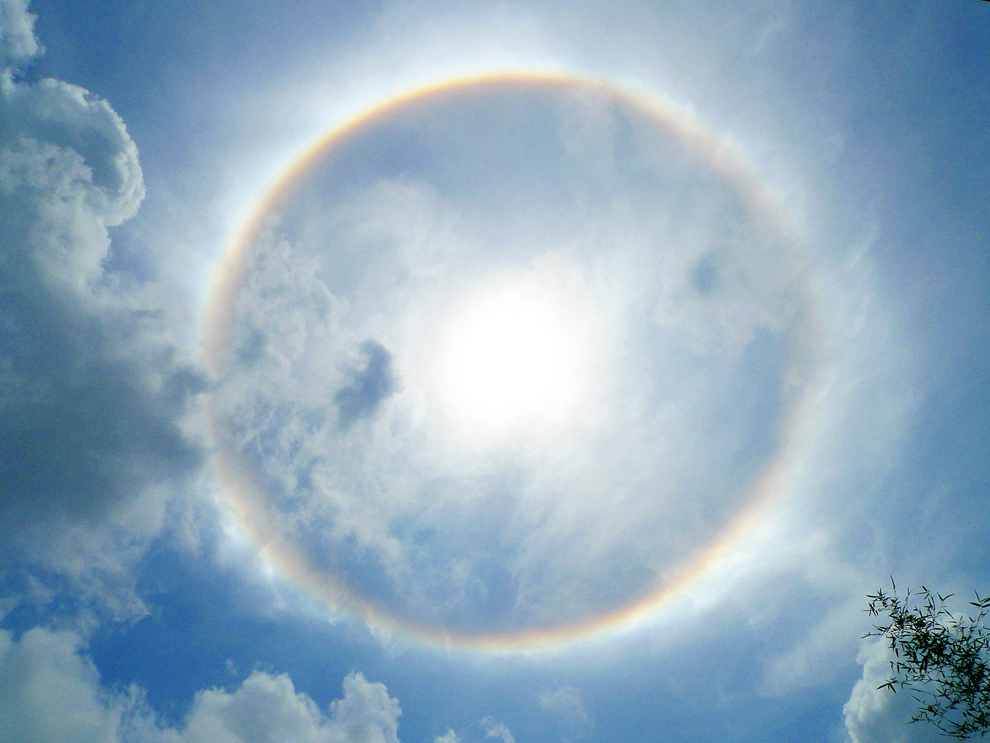What color is the sun?
2023-11-29

One of the most fascinating things about science is that even seemingly simple questions can sometimes be confusing. "What color is the sun?" is one such question. I guess the answer for most people is yellow. But sometimes the sun appears white when viewed through the camera. Is it true that "seeing is believing"? In fact, this issue involves many complex factors.
In the 19th century, physicists proposed the concept of a "black body," a hypothetical object that perfectly absorbs all radiation. Once light hits it, it heats up, causing it to radiate heat in the form of light across the entire spectrum, with brightness at specific colors (or frequencies). reaches its peak. If the intensity of light radiation from a black body at different temperatures and wavelengths is plotted, the so-called black body radiation curve is formed.
Essentially, the Sun is a ball of extremely hot gas, or more accurately, a ball of blazing plasma. Its behavior is very similar to that of a black body. When we measure the spectrum of the sun (that is, measure the brightness of different wavelengths of light) using satellites above the Earth's atmosphere, we see that it radiates light across the entire visible spectrum (the light that the human eye can see). This is no coincidence! Human beings have evolved and adapted to the sun, so we can see the strongest wavelengths of sunlight. The sun also radiates ultraviolet and infrared rays, but not as much. Surprisingly, the Sun is brightest in the blue and green parts, and gradually gets dimmer toward the red parts. Naturally, you might think this means the sun is cyan! But that's clearly not the case.
The question comes back to our visual sources. Cones are cells that specialize in detecting colors and are divided into three types: L, M and S. They focus on seeing long wavelengths (up to the red end), medium wavelengths (from yellow to green) and short wavelengths (blue) respectively. of light. The whole process is complicated (it's biological), but in summary, when light hits the cones, they send signals to the brain indicating the corresponding intensity of different wavelengths of light. The brain compares these signals and ultimately interprets them as colors. If the S and M cones are strongly activated but the L cones are not, then you might see a greenish tint, while increased L cone activity would make us see red. If light across the visible spectrum were all equally bright, we would see white. Sunlight does this, causing all three types of cone cells to be strongly activated, so it appears white.

This answer is correct for sunlight in space that has never passed through the Earth's atmosphere. For example, the sun seen by astronauts is white. However, when sunlight passes through the air, some is absorbed by air molecules and some is scattered. Different colors of light are affected differently: blue light is scattered more easily than red light. This is the reason why the sky appears blue. The scattered light all over the sky dyes the sky blue. It's this process that slightly changes the color of the sun we see. If you remove the blue light from the sun, it will look more yellow.
However, the brain's perception of color is actually a relative concept. We compare the color of an object with other colors in the field of vision. For example, if the sky is blue, it will make the sun look more yellow. But in fact, the white paper we see (which can reflect all colors of light well) is still white in the sun, which also shows that the sun is generally white. Even affected by atmospheric scattering, the color of the sun changes very slightly and is difficult to distinguish with the naked eye.
Likewise, it's difficult to tell the sun's color by staring directly at it. This is a good thing! Because the infrared rays emitted by the sun are enough to damage our retinas, "try not to stare at the sun" has been engraved in our genes. Of course, it's hard to tell the color of something if you can't see it. But here, I must tell you clearly: Never look directly at the sun! It can permanently burn your retinas, causing severe visual impairment.
Only when the sun is low and close to the horizon can we look directly at the sun without protection, when it is obscured by haze in the atmosphere and becomes much darker (even then, be careful). At sunrise or sunset, more blue and green light is scattered by the atmosphere, so the sun appears yellow, orange, or even red, which may also be why people tend to think of the sun as yellow.
For those who claim that the sun changes color, this is not the case. If something cool like this were happening, astronomers would have noticed, and they're not very good at keeping secrets. Just like "beauty is in the eye of the beholder", everyone does not see the same color, but this is the charm of color.


